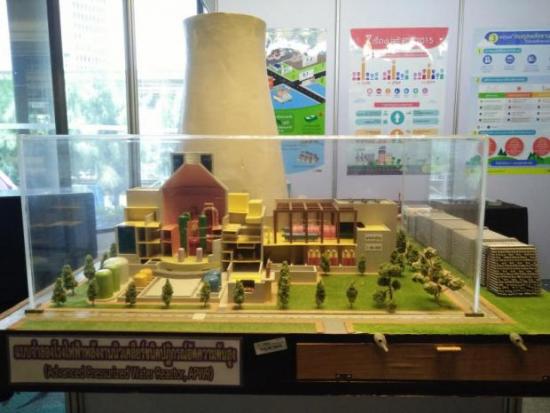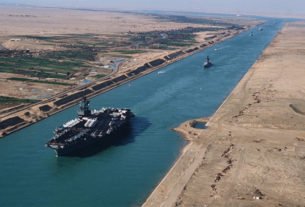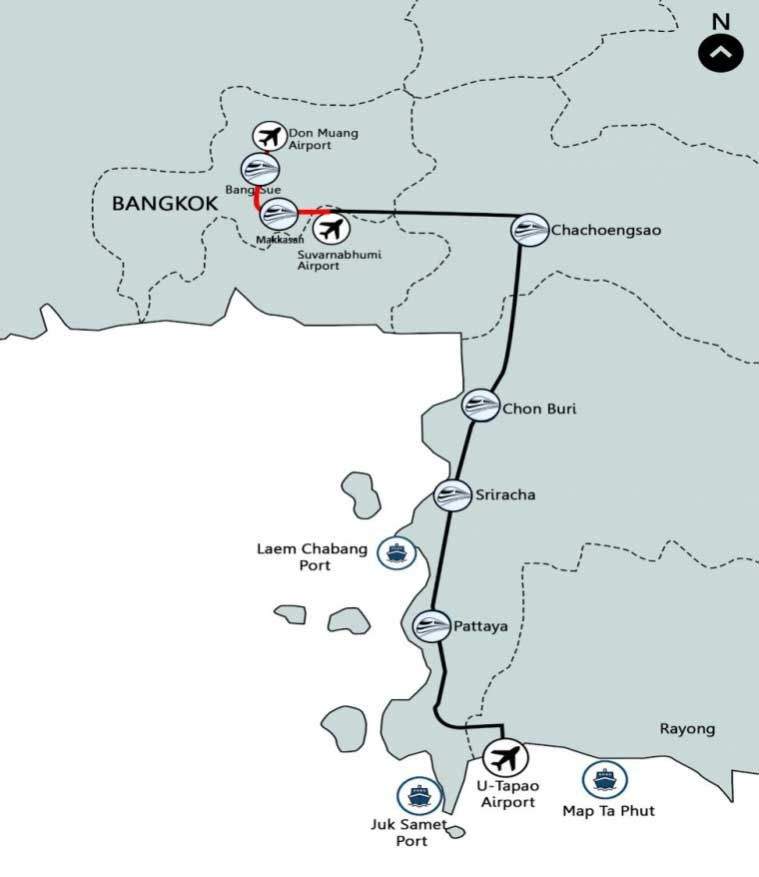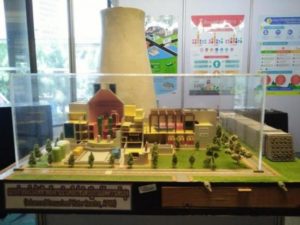
Nuclear energy is back on the agenda in Thailand as demand soars for electricity, but the government must quell safety concerns
When Ratchaburi Electricity Generating Holding announced it was partnering the Chinese in a nuclear power project, it offered a rare opportunity for Thai technicians to get first-hand experience of the construction of a nuclear plant.
In January, Ratch announced a joint venture with China General Nuclear Power Corporation and Guangxi Investment Group to develop Fangchenggang Nuclear Power Project Phase II in Guangxi, 45km from the Vietnamese border.
Ratch will inject 7.5 billion baht in capital through a subsidiary for a 10% shareholding, while China General Nuclear holds 51% and Guangxi Investment Group 39%.
The project also presents a great opportunity for the Electricity Generating Authority of Thailand, the biggest shareholder in Ratch.
Ratanachai Namwong, Egat’s deputy governor of power plant development, said it was the first time Egat had participated in a nuclear power plant project at the development stage. Thai engineers had previously trained at nuclear plants in China and Japan, but only when they were operational.
The Fangchenggang plant is expected to be operational by 2021, and over the next five years Egat engineers will take turns going to China. They will learn how to build a nuclear plant from the beginning to the end, including nuclear power technology, plant preparation, licensing, construction and operations.
While Ratch was working on the deal with China, the Energy Ministry launched a campaign in several provinces to change public perceptions about the dangers of nuclear power.
“People are scared of nuclear power,” said Mr Ratanachai. “To give you an absolutely honest answer, Thailand needs nuclear power for long-term benefits.”
Thailand has a long-term strategy to launch the country’s first nuclear reactor by 2036. But bodies such as Egat will have to overturn ingrained prejudices and fears about the safety of nuclear power and convince the public of its superiority to other sources.
ENERGY DILEMMA
Mention the word “nuclear” and most people have images of 1945 and giant mushroom clouds when the US dropped atomic bombs on Hiroshima and Nagasaki, killing more than 129,000 people and triggering Japan’s World War II surrender.
In the 70 years since, the peacetime use of nuclear reactors has also had a chequered history. Nuclear accidents at Japan’s Fukushima Daiichi plant in 2011 and Russia’s Chernobyl plant in 1986 are often raised by activists as a warning to policymakers around the world about the inherent dangers.
In Thailand, the first nuclear power plant was proposed for Chon Buri in 1966 under the leadership of Field Marshal Thanom Kittikachorn, but it never got off the ground due to public opposition and issues raised about its financial viability.
But the nuclear power issue has been on and off government agendas over the past 50 years and reviewed by post-coup administrations in 1977, 2006 and 2014.
In 2007, after Thaksin Shinawatra was thrown out of power a year earlier, a 2,000-megawatt nuclear plant was put up for discussion in the Power Development Plan by the ruling junta.
The 2011 Fukushima Daiichi nuclear accident prompted governments around Southeast Asia, including Thailand and Vietnam, to suspend all nuclear power projects to quell public disquiet.
Under the leadership of coup-installed Prime Minister Prayut Chan-o-cha, the Energy Ministry in June last year introduced a new energy plan, including the 2007 version of the nuclear policy.
Following Ratch’s joint venture, the National Legislative Council gave final approval in May for the Nuclear Energy for Peace Bill, which will come into effect by the end of this year. The bill, an amended version of 1962 legislation, legalises nuclear facilities including power plants for peaceful purposes.
According to Energy Ministry data, Thailand is heavily dependent on natural gas, which is used for almost 70% of electricity generation. Two-thirds of natural gas production is from concessions in the Gulf of Thailand, most of which are due to expire in 2023. The remaining third is from Myanmar concessions located in the Andaman Sea.
Bidding for a new round of gas and oil concessions has been delayed for two years after anti-fossil fuel groups stormed Government House in 2015, calling for the monopoly big oil enjoys over the concessions to be shared.
The ministry says if bidding for concessions does not open before mid-2017, natural gas supplies will shrink to the equivalent of 6,300MW of power generation by 2021, about a fifth of the country’s projected daily power needs of 35,000MW.
Without clear long-term indications, gas concession operators will be reluctant to invest to maintain production, it says.
PRICE ISSUE
“Power demand in Thailand has grown at a terrifying rate,” said Mr Ratanachai. “We need baseload power plants that can keep electricity available for 24 hours. Coal and nuclear can do that job. The capacity of renewable energy today is not stable enough to cover such high demand.”
According to the International Energy Agency, Thailand’s electricity peak load has grown by almost 50% over the past decade. Power consumption has risen by 5% per year.
With the hike in demand, the IEA projects that by 2040 in Southeast Asia the percentage of energy requirements met by coal will increase from 32% to 50%, the opposite of most energy trends around the world.
Power generation from natural gas will decline from 44% to 26%.
Growing dependence on imported fossil fuels and environmental concerns have prompted many Southeast Asian countries, including Indonesia, Malaysia, the Philippines, Thailand and Vietnam, to consider the role nuclear power could play in their energy mix.
Egat recorded Thailand’s highest electricity demand at 29,619MW in May this year.
By 2036, gas will make up 30-40% of the country’s power supplies, coal and lignite 25%, hydropower purchased from neighbouring countries 15-20%, renewable energy 15-20% and nuclear 0-5%, according to Energy Policy and Planning Office projections.
In 2014, gas made up 65% of supply, coal and lignite 20%, hydropower 7% and renewable energy 8%. Thailand is also developing infrastructure such as pipelines and liquefied natural gas terminals to import energy.
By 2036, power capacity will stand at 70,335MW to serve predicted total demand of 49,655MW.
Mr Ratanachai says keeping prices under control is a big issue. “We must control the electricity price to not exceed five baht per unit, otherwise the industrial sector will move out of the country to find new production bases. People will lose jobs and social problems will be aggravated. Thailand will be a failed state.”
The industrial sector is the main consumer of electricity in Thailand. It accounted for 41.8% of consumption in 2013, according to Eppo. The commercial and public sectors consume 35% and the residential sector 23%.
The electricity needed to power small to medium factories, 69-115 kilovolts, costs 2.3-4 baht per unit in Thailand. In Vietnam, one of Thailand’s industrial competitors, 22-110 kilovolts costs 2.2-4 baht per unit.
Mr Ratanachai says nuclear and coal will become the two main power options because of their cheap cost and stability.
Eppo cites Egat’s 2012 data, which shows the cost of producing electricity per kilowatt-hour at 12.5 baht for solar, 5.20 for wind, 3-3.5 for biomass, 2.79 for nuclear, 2.94 for coal and 3.96 for gas.
But Egat’s planned coal-fired power plants in Krabi and Songkhla, with a capacity of 3,000MW, have already faced opposition from local communities.
Employment opportunities created by nuclear power plants may help Egat sell them to the public. Building and operating nuclear plants create more jobs than coal plants, Mr Ratanachai said, with more than 5,000 jobs during construction and 10,000, both direct and indirect, when a plant is operational.
HIDDEN COSTS
Santi Choakchaichamnankit, an independent researcher from Energy Watch, says there are alternatives to the “cheap energy” mantra and nuclear energy being promoted as the major solution.
“No energy is cheap,” he said. “If it’s cheap, that’s because it doesn’t calculate hidden costs such as a stringent safety systems and waste management.”
By 2030, the IEA projects the cost of coal and solar power will be the same but the operational and maintenance cost of solar will be 2.6 times lower per kilowatt.
Eppo reports that in 2013 electricity consumption growth in the manufacturing and commercial sectors in Thailand was much higher than GDP growth, increasing by three and 3.7 times respectively compared with 1990.
Eppo has set targets to reduce energy use by 30% by 2036, compared with the 2010 level, and to reduce greenhouse gas emissions by 20-25%.
Mr Santi says decision-makers should take energy efficiency more seriously. He said peak demand this year despite Thailand’s economic slowdown was proof of the failure of energy saving.
“Whatever electricity sources we have won’t be enough if electricity demand grows endlessly,” he said. “It’s a challenge for Thailand to look at the global trend that aims to improve a country’s economy with less electricity growth.”
Another controversial issue is the Power Development Plan target to set power reserves at 25-39% of total capacity in the early years, declining to 15% by 2036.
Mr Santi said the reserve margin was very high. He said gas supplies will decline but not at such a rapid rate to force Thailand to embrace nuclear power.
His analysis found the high reserve will mean 600 billion baht in investment in power plants that are not urgently required.
Mr Santi said renewable energy technology was being developed at such a fast pace that it should not be ignored as a major future supply.
ATTITUDE ADJUSTMENT
Since the middle of last year, the Energy Ministry has been running the “Building understanding to develop attitudes towards nuclear power” project in several provinces.
Under the control of its Nuclear Energy Study and Coordination Office, it organises seminars and workshops on nuclear power for local administrations, the media, academics and state enterprise officials.
Nine strategic provinces have been identified for nuclear power plants: Chai Nat, Chon Buri, Chumphon, Nakhon Sawan, Nakhon Si Thammarat, Prachuap Khiri Khan, Surat Thani, Trat and Ubon Ratchathani.
Another 20 provinces neighbouring the nine are identified as secondary targets, including Krabi, Phang Nga, Phetchabun and Suphan Buri.
The project will run for five years and it’s hoped about 2,000 people will eventually form a network to provide nuclear power-related information to local communities.
But in some provinces such as Surat Thani, workshops have already faced protests from locals who said they only promote the benefits of nuclear power.
“We are not the ones who decide [to build a nuclear power plant],” said Tanathach Jungpanich, assistant permanent secretary of the Energy Ministry who is involved in the project.
“We just prepare people and build up positive attitudes to nuclear energy.
“We are providing a platform where every sector can discuss nuclear power, whether they agree or disagree with it.”
Mr Tanathach says the project will also discuss preparing for a possible nuclear accident in a neighbouring country. He also wants to produce a drama series that has nuclear power as a central plot.
CHINA’S EMERGENCE
China is becoming more ambitious in its drive to compete with the United States, France and Russia as an exporter of atomic power technology.
Much of the expertise in China’s government-run nuclear industry has developed over recent decades with help from US firm Westinghouse Electric and France’s Areva and EDF.
The World Nuclear Association says the industry is growing fast, with 32 reactors in operation, 22 being built and more planned.
China accounted for eight of 10 reactors that started operations last year and six of eight construction starts.
Both China and Russia see Southeast Asia as a lucrative market for their nuclear technologies.
During the Russia-Asean Summit in Sochi in May, Russian President Vladimir Putin said Moscow was ready to lead construction of nuclear power plants in Asean countries.
At the summit, Thai PM Prayut said Russia had offered to support Thailand in infrastructure development, technology transfer and energy security. No details of any official agreement were made public.
Gen Prayut also met Chinese Premier Li Keqiang in Beijing last year and said the two countries had agreed to collaborate on energy development in Thailand.
With Russia and China vying for influence, Tara Buakamsri, country director for Greenpeace Southeast Asia, said there was a possibility Thailand might become a battlefield.
“In the political situation today, there’s a chance that nuclear hegemony can intervene,” he said. “But we can’t be absolutely sure right now. We must keep watching them.”
Mr Tara believes it won’t be easy to launch Thailand’s first reactor because of the advanced technology and expected public opposition.
The provinces identified in the Energy Ministry’s PR campaign had staged protests in the past against nuclear power projects.
Mr Tara said he was worried that opposition to the nuclear projects may be suppressed by the military government. “No one wants a nuclear power plant in their backyard,” he said.
REGIONAL FRONT
Thailand is not the only Asean country preparing for its first nuclear power plant. Although facing delays due to financing, safety and legal problems, Vietnam has signed an agreement with Russia and Japan for two 1,000MW reactors.
The first reactor, Ninh Tuan 1, will be built in Phuc Ding village in Thuan Nam district and is due for completion in 2019.
Nguyen Tuan Khai, deputy director of Vietnam’s Institute for Nuclear Science and Technology, said at a recent conference in Bangkok that Thailand should not worry about a nuclear accident at the plant. He said studies by the institute had shown most of the radioactive material would disperse into the sea.
No matter what Thailand eventually decides on its nuclear future, a regional network of nuclear scientists is already forming.
Kampanart Silva, from the research and development division of the Thailand Institute of Nuclear Technology, is working to establish an Asean network for nuclear plant safety research.
“It’s a good time to call for alliances,” he said at the International Nuclear Science and Technology Conference in Bangkok this month. “There are a number of experts scattered in Thailand and Asean.”
The research network hopes to ensure the safety of nuclear plant operations and gain public trust in all Asean countries via education and research programmes.
“If an accident should happen in these power plants, it may significantly affect the countries in the Indochina peninsula or other countries in Asean,” said Mr Kampanart.
“We are not taking sides. But if one day we eventually have a nuclear power plant, we must make sure that it is safe for people.”
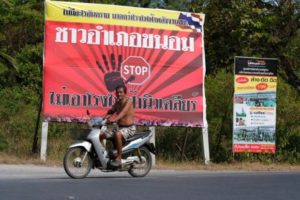
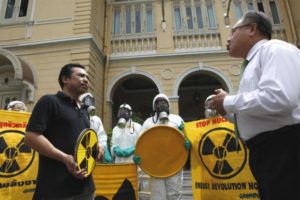
Source: http://www.bangkokpost.com/news/special-reports/1072704/power-play-tackles-hearts-and-minds
